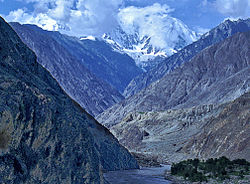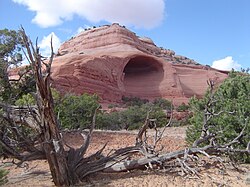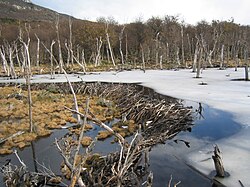Geomorphology
Geomorphology [1] is the scientific study of landforms and the processes that shape them.
More broadly, it studies the evolution of the topography of a planet. Geomorphologists seek to understand why landscapes look the way they do, to understand landform history and dynamics, and to predict future changes. They use a combination of field observation, physical experiment, and numerical modeling.
Geomorphology is part of geography, geology, geodesy, engineering geology and archaeology. This range of interests leads to a wide variety of research styles and interests in the field.
Geomorphology Media
Badlands incised into shale at the foot of the North Caineville Plateau, Utah, within the pass carved by the Fremont River and known as the Blue Gate. G. K. Gilbert studied the landscapes of this area in great detail, forming the observational foundation for many of his studies on geomorphology.
Waves and water chemistry lead to structural failure in exposed rocks.
Lake "Veľké Hincovo pleso" in High Tatras, Slovakia. The lake occupies an "overdeepening" carved by flowing ice that once occupied this glacial valley.
Part of the Great Escarpment in the Drakensberg, southern Africa. This landscape, with its high altitude plateau being incised into by the steep slopes of the escarpment, was cited by Davis as a classic example of his cycle of erosion.
Gorge cut by the Indus River into bedrock, Nanga Parbat region, Pakistan. This is the deepest river canyon in the world. Nanga Parbat itself, the world's 9th highest mountain, is seen in the background.
Wind-eroded alcove near Moab, Utah
Beaver dams, as this one in Tierra del Fuego, constitute a specific form of zoogeomorphology, a type of biogeomorphology.
Seif and barchan dunes in the Hellespontus region on the surface of Mars. Dunes are mobile landforms formed by the transport of large volumes of sand by wind.









